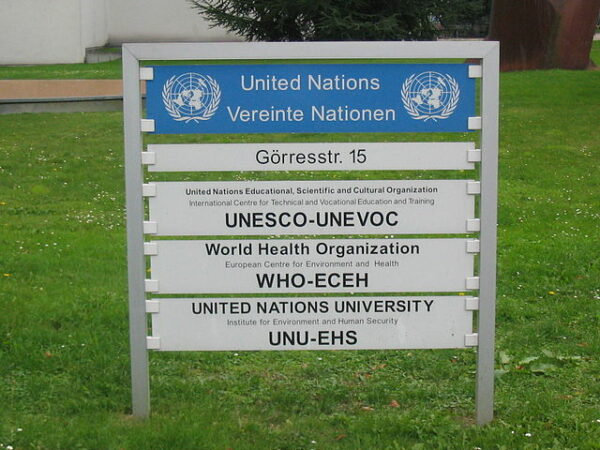The United Nations Educational, Scientific and Cultural Organization (UNESCO) was established on November 16, 1945. The aim of the new agency was to promote international collaboration in the fields of education, science, and culture. The hope for world leaders was that following the devastation caused by World War II, the fostering of intellectual cooperation and mutual understanding among nations could contribute to lasting peace.
UNESCO’s constitution, adopted in London in 1945, outlines its objectives, which include promoting education for all, fostering freedom of expression, advancing scientific knowledge, and preserving cultural heritage.
The group has not been without controversy, however, writes Britannica.
“UNESCO’s initial emphasis was on rebuilding schools, libraries, and museums that had been destroyed in Europe during World War II. Since then its activities have been mainly facilitative, aimed at assisting, supporting, and complementing the national efforts of member states to eliminate illiteracy and to extend free education. UNESCO also seeks to encourage the free exchange of ideas and knowledge by organizing conferences and providing clearinghouse and exchange services.
As many less-developed countries joined the UN beginning in the 1950s, UNESCO began to devote more resources to their problems, which included poverty, high rates of illiteracy, and underdevelopment. During the 1980s UNESCO was criticized by the United States and other countries for its alleged anti-Western approach to cultural issues and for the sustained expansion of its budget. These issues prompted the United States to withdraw from the organization in 1984, and the United Kingdom and Singapore withdrew a year later.
After the election victory of the Labour Party in 1997, the United Kingdom rejoined UNESCO, and the United States and Singapore followed suit in 2003 and 2007, respectively. In 2011 UNESCO approved full membership for Palestine. Following the vote, the United States announced that it would no longer pay dues to the organization, because of congressional legislation that prohibited the financing of any UN agency that admitted Palestine as a full member. Because of its unpaid dues, the United States lost its voting rights in UNESCO in 2013. In 2017 U.S. officials, citing “anti-Israel bias” and the size of U.S. arrears, announced that the United States would leave UNESCO again at the end of 2018. Israel withdrew from the organization at the same time.”
Despite the ongoing controversies, the organization’s greatest achievement has also become its most well-known. The UNESCO World Heritage Sites program traces its origins to the early 1960s when concerns about the increasing threats to cultural and natural heritage prompted international action. The idea gained momentum with the adoption of the Venice Charter for the Conservation and Restoration of Monuments and Sites in 1964. This charter emphasized the need for a collective effort to protect cultural heritage and laid the groundwork for the establishment of the World Heritage Sites program.
In 1972, the General Conference of UNESCO adopted the Convention concerning the Protection of the World Cultural and Natural Heritage. This landmark convention recognized the importance of preserving both cultural and natural heritage for future generations and established the framework for the World Heritage Sites program. The convention came into force in 1975, and the first sites were inscribed on the list in 1978.
The World Heritage List initially focused on cultural heritage sites but later expanded to include natural sites. The criteria for selection include the site’s outstanding universal value, integrity, and authenticity. Over the years, the program has grown significantly, and as of my last knowledge update in January 2022, there were over 1,100 World Heritage Sites across the globe.
The World Heritage Sites program has played a crucial role in raising awareness about the importance of preserving our shared heritage. It fosters international cooperation in the protection and conservation of these sites, encouraging collaboration among nations to safeguard the cultural and natural treasures that hold significance for humanity as a whole. The list includes iconic landmarks such as the Great Wall of China, Machu Picchu, the Pyramids of Egypt, and natural wonders like the Galápagos Islands and the Great Barrier Reef. Each site represents a unique piece of our global heritage, contributing to the collective identity and understanding of civilizations and the natural world.






